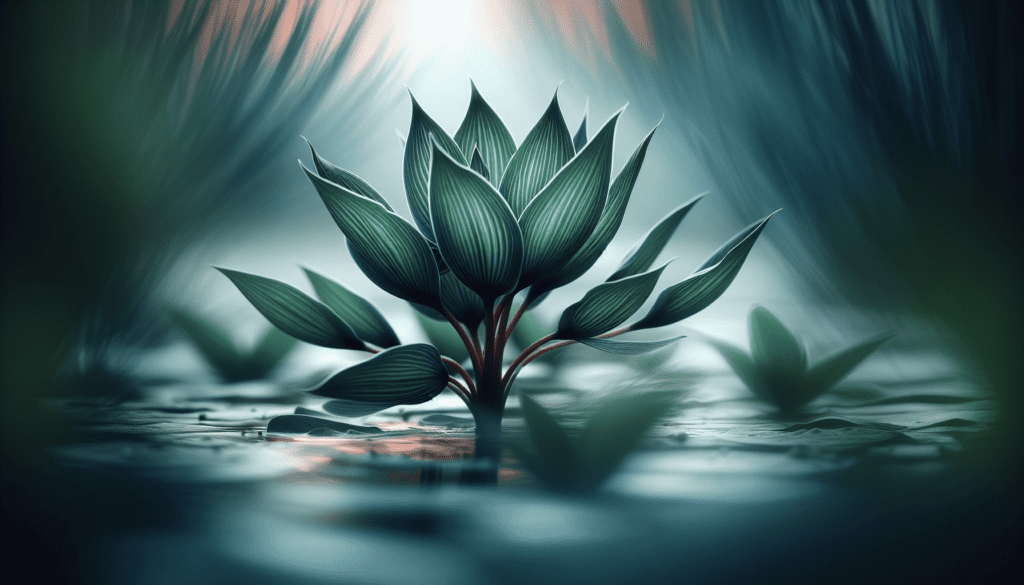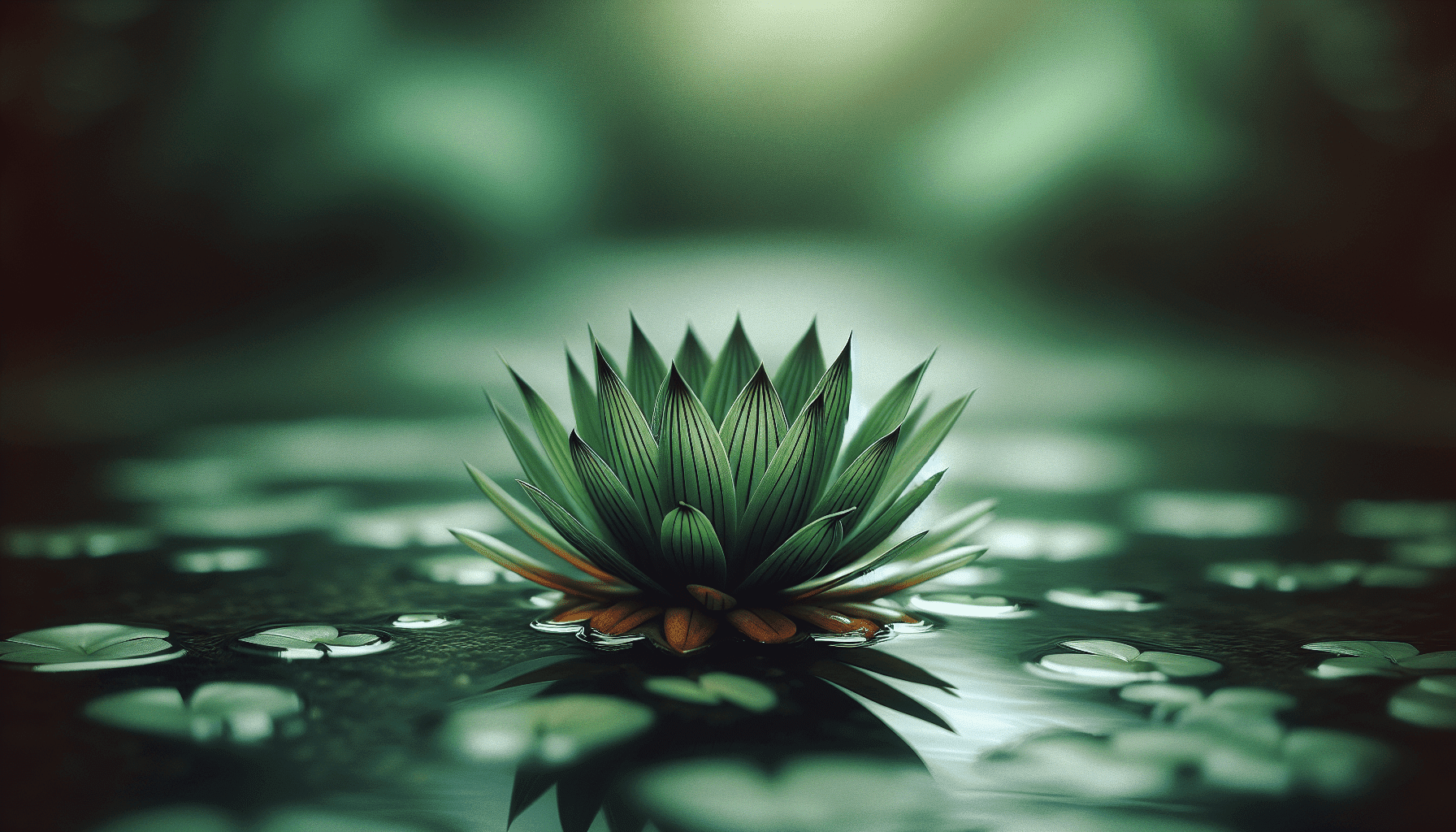In your exploration of the verdant world of aquatic plants, you may find yourself coming across the fascinating species known as Arrowhead. Among the broad palette of living green that beautifies the freshwater environments, the Arrowhead plant, with its namesake pointed leaves and distinctive life cycle, occupies a unique niche. This article will shed light on the botanical characteristics, growth habits, and ecological significance of this wonderful specimen of aquatic flora, enhancing your understanding of its role in sustaining the aquatic ecosystems. As a student, researcher, or merely a curious mind, you’ll appreciate the depth and width of information that this extensive review will provide.
Overview of Arrowhead Plant
Arrowhead plant, scientifically known as Sagittaria sagittifolia, is a species of aquatic plant that primarily thrives in shallow waters and marshy areas. It is well-known for its namesake arrowhead-shaped leaves and distinctive white flowers. This plant plays a significant role in various ecosystems and carries cultural and medicinal values in different societies worldwide.
Botanical Description of the Plant
The arrowhead plant is categorized as an aquatic perennial, meaning it can live more than two years in the right conditions. The visible portion of the plant includes a cluster of basal leaves and the erect, elongated, rigid stalks that bear the flowers and fruits. Its leaves are unique, having an obvious shape resembling that of an arrowhead, lending the plant its common name. The leaves typically range from 7 to 45 cm in length.
Scientific Classification
As for its scientific classification, the arrowhead plant belongs to the family Alismataceae under the order Alismatales. Its genus is Sagittaria, and the specific species is Sagittaria sagittifolia. In botanical taxonomy, it is officially labeled Sagittaria sagittifolia L.
Habitat and Distribution
The arrowhead plant habitually occupies freshwater habitats such as marshes, swamps, streams, and the shallow edges of lakes and ponds. Its natural range extends across both North America and Eurasia.
Geographical Locations
In geographical terms, the arrowhead plant proliferates widely in various regions of the world, from the Americas to Europe and Asia. It is native to the British Isles, Central, Eastern, and Northern Europe, Russia, certain parts of Scandinavia, and Asia’s northern reaches.
Types of Aquatic Ecosystems Arrowhead Populates
Being an aquatic plant, the arrowhead mainly populates ecosystems dominated by fresh water. This includes wetlands, ponds, slow-flowing rivers, and edges of freshwater lakes.

Growth and Development
The growth and development of the arrowhead plant exhibit distinct patterns heavily influenced by water temperature and light intensity.
Lifecycle of the Arrowhead Plant
In its lifecycle, which spans more than two years, the arrowhead plant starts as a seed, then progresses through juvenile and adult stages. The seeds germinate underwater, and the seedlings initially grow submerged. By the time the aquatic plants reach maturity, they would have developed floating leaves and the characteristic arrowhead-shaped leaves above water.
Growth Rate and Season
The growth rate of the arrowhead plant is significantly influenced by environmental conditions. It exhibits rapid growth during warm weather and is most active during the spring and summer months. Growth slows down during the cooler months of fall before coming to a halt in winter.
Environmental Conditions for Growth
Ideal growth conditions for the arrowhead plant include shallow, slow-moving or stationary water, full sunlight, and a wet or muddy substrate rich in organic matter. It is adaptable to various soil types and can tolerate slightly acidic conditions.
Physical Characteristics
The physical characteristics of the arrowhead plant are defining and identifiable easily in its natural environment.
Leaf Structure and Appearance
The arrowhead plant’s leaf structure is simple, being broad at the base and narrowing into a long point, giving the appearance of an arrowhead. The leaves can be both submersed and emergent, are generally thick and rigid, and bright to dark green in color.
Flower Description
The flower of the plant comprises three white petals and a yellow center, making a lovely contrast against the green foliage. They bloom intermittently from late spring through early fall.
Root System Description
The robust root system of the plant consists of a horizontal rhizome with fibrous roots digging into the soil. This form provides both stability and nutrient absorption abilities in submerged conditions.
Stem Description
The stems of the arrowhead plant are elongated, sturdy, and erect, reaching up to 1m in height. The flowering stems are divided at the top forming clusters of three flowers.

Ecological Importance
The Arrowhead plant plays a pivotal role in many aquatic ecosystems, contributing positively to biodiversity, water quality, and habitat provision.
Role in the Aquatic Ecosystem
As a primary producer in the ecosystem, it provides food for a range of wildlife, including ducks, geese, and other water birds. Its dense growth creates a protective habitat for small fish and amphibians.
Impact on Water Quality
Arrowhead plants, through their roots, absorb excess nutrients in the water, improving water quality by reducing nutrient pollution.
Contribution to Biodiversity
The plant’s capacity to form dense stands provides an excellent habitat, spawning ground, and nursery for many species of fish, invertebrates, and amphibians, contributing to biodiversity within the ecosystem.
Uses of Arrowhead Plant
Arrowhead plant has numerous applications, from culinary use to its practices in traditional medicine, as well as in ornamentation and gardening.
Culinary Uses Around the World
The plant’s tubers are edible and used in various recipes worldwide, particularly in Chinese and Japanese cuisine, where they are often boiled or roasted.
Traditional and Modern Medical Uses
Traditionally, parts of the_arrowhead plant were used in folk medicine for various ailments, from indigestion to respiratory conditions. Current research investigates its potential antibacterial and anti-inflammatory properties.
Uses in Aquascaping and Ornamental Gardening
Due to its striking appearance and hardy nature, the arrowhead plant is popular in aquatic gardens and as a houseplant. It is also utilized in many aquarium and pond setups due to its aesthetic appeal and ecological benefits.
Cultivation and Care
While the arrowhead plant grows copiously in the wild, cultivating it in artificial environments requires certain specific practices.
Propagation Techniques
The plant can be propagated through seeds, divisions, or detached vegetative parts. It possesses a high capability for vegetative reproduction via its extensive catalogue of rhizomes.
Optimal Growing Conditions
The optimal growing conditions include a full sun position with access to plentiful water and a slightly acidic, organic-rich substrate. Stable temperature ranges between 60-80 degrees Fahrenheit are also favorable.
Common Pests and Diseases
Arrowhead plants are generally resilient and disease-resistant. However, they can occasionally be attacked by pests like aphids, or susceptible to fungal diseases if not kept in ideal conditions.
Plant Care Tips
Ensure that the plant remains well-watered, is exposed to ample sunlight, and ensure periodic pruning to control its growth and encourage flowering.
Interesting Facts and Trivia
A plethora of interesting facts surround the arrowhead plant, from its etymology, cultural significance, and history.
Etymology of its Name
The name Sagittaria sagittifolia is derived from the Latin word ‘sagitta’ meaning an arrow, reflecting the shape of its leaves.
Cultural Significance
From a cultural perspective, native American tribes revere this plant and use it as food and medicine. In Chinese cultures, it symbolizes strength and tenacity.
Brief History of the Plant
Dating back to antiquity, the plant appeared in literature as early as the 16th-century British herbal guides.
Conservation Status
While not widely endangered, arrowhead plant populations may be vulnerable in certain areas due to habitat loss and degradation.
Vulnerability to Extinction
Although not globally threatened or endangered, local extinctions or reductions in populations have occurred in some areas due to drainage, pollution, and changes in water management practices.
Conservation Efforts
In areas where the arrowhead plant is vulnerable or threatened, conservation efforts are underway to protect and restore its habitats. Such efforts include habitat protection, wetland conservation, and policies aimed at reducing pollution.
Status in Various Countries
In several countries, the arrowhead plant is protected under environmental laws, recognizing its ecological importance.
Potential Hazards and Threats
The arrowhead plant may pose certain threats and face hazards.
Invasiveness and Impact on Native Ecosystems
Outside its native range, the arrowhead plant has been reported as invasive in some regions, particularly North America, where it can dominate water bodies and wetland habitats, potentially displacing native vegetation.
Harmful Effects on Human Health
Although the plant is considered harmless to humans, individuals with certain allergies may react to its pollen.
Threats to the Plant’s Survival
Potential threats to the survival of the arrowhead plant include habitat loss due to urban development, pollution, and invasive species which may out-compete the plant for resources. The global threat of climate change, affecting temperature and water regime, should not be underestimated either.
